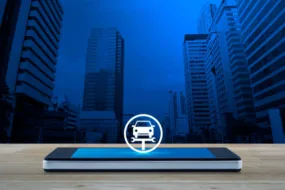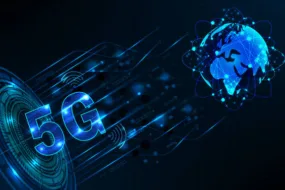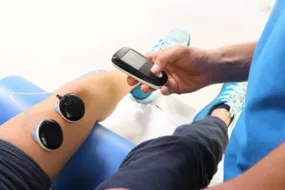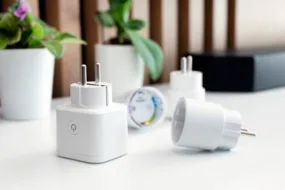Urban living:

Imagine a city that anticipates your needs. Traffic lights adjust to ease congestion, trash bins alert sanitation crews when they’re full, and doctors diagnose patients remotely with pinpoint accuracy.
5G is the next generation of wireless technology, promising blazing-fast data speeds, ultra-low latency (response time), and the ability to connect many devices. We now have the opportunity to transform our cities into vibrant, efficient, and sustainable ecosystems.
How 5G is Supercharging Urban Living Connectivity
5G isn’t just about faster downloads for your phone. It’s a revolutionary upgrade to our entire wireless infrastructure. Here’s what sets it apart:
i. Blazing-Fast Speeds: Experience data speeds up to 100 times faster than 4G. Download movies in seconds, stream high-definition content without buffering, and enjoy lag-free gaming.
ii. Ultra-Low Latency: 5G boasts near-instantaneous response times. This is critical for real-time applications like remote surgery, autonomous vehicles, and connected traffic management systems.
iii. Massive Network Capacity: Imagine a network that can simultaneously handle millions of devices communicating. 5G makes this possible, paving the way for a true Internet of Things (IoT) revolution in our cities.
Read More: 5 Ways 5G Technology is Revolutionising the IoT
5G Connectivity in Urban Living: Unleashing its Potential

Here’s how 5G is reimagining urban living across various sectors:
1. Smarter Transportation:
i. Traffic Flow Optimisation: 5G-connected sensors will monitor traffic patterns in real time, allowing for dynamic adjustments to traffic lights. This can significantly reduce congestion, saving commuters time and fuel.
ii. Self-Driving Cars: 5G’s ultra-low latency is crucial for autonomous vehicles. The constant stream of data from sensors and cameras requires near-instantaneous communication to ensure safe navigation and prevent accidents.
iii. Improved Public Transportation: Real-time information on bus and train arrivals will be readily available, along with optimised routes based on traffic conditions.
2. Enhanced Public Safety and Security:
i. Smarter Surveillance: High-definition cameras with real-time monitoring capabilities can deter crime and improve response times.
ii. Connected First Responders: Police, firefighters, and paramedics will have access to a wealth of data at their fingertips, allowing for faster and more coordinated emergency responses.
iii. Environmental Monitoring: Sensors can detect air and water pollution levels, enabling authorities to take swift action to address environmental concerns.
3. Revolutionising Healthcare:
i. Remote Patient Monitoring: Doctors can monitor vital signs and health data remotely, allowing for early detection of potential issues and improved care for chronically ill patients.
ii. Telemedicine: 5G facilitates seamless video consultations, expanding access to healthcare for those in remote areas or with mobility limitations.
iii. Precision Surgery: Surgeons can leverage real-time data and augmented reality tools for minimally invasive and highly precise surgeries.
4. Transforming Education:
i. Immersive Learning: Imagine virtual field trips or interactive science experiments. 5G enables the creation of immersive learning experiences that boost engagement and knowledge retention.
ii. Personalised Learning: With 5G’s massive connectivity, educators can tailor learning experiences to individual student needs and learning styles.
iii. Remote Learning Opportunities: Students can access high-quality educational resources regardless of location, bridging the digital divide in education.
5. Building sustainable cities:
i. Smart Grids: 5G allows for real-time monitoring of energy consumption, enabling utilities to optimise energy distribution and reduce waste.
ii. Smart Buildings: Buildings can automatically adjust lighting, heating, and cooling based on occupancy and weather conditions, minimising energy usage.
iii. Environmental Monitoring: Sensors can track air and water quality, waste levels, and noise pollution, helping cities implement targeted sustainability initiatives.
Read More: Unveiling the Next Gen of Wearable Health Trackers
Challenges and Considerations:
While 5G presents a wealth of opportunities, there are challenges to address:
i. Infrastructure Investment: Deploying a robust 5G network requires significant investment in infrastructure, including cell towers and fibre optic cables.
ii. Device Compatibility: Not all devices are currently 5G-enabled. Consumers and businesses will need to upgrade to reap the full benefits.
iii. Privacy Concerns: The vast amount of data collected by 5G networks raises concerns about privacy and security. Robust regulations and data protection measures are essential.
The road ahead: embracing the 5G future
5G is not just about faster downloads; it’s about creating a smarter, more efficient, and ultimately more livable urban environment. As cities embrace 5G technology, we can expect a future with:
i. Improved quality of life: From shorter commutes to a cleaner environment, 5G has the potential to significantly enhance the urban experience.
ii. Boosted economic growth: Smart cities attract businesses and talent, fostering innovation and economic prosperity.
iii. Efficient resource management and environmental monitoring contribute to a greener and more sustainable future for our cities.
Our cities have a bright future. By harnessing the power of 5G, we can create urban landscapes that are not only technologically advanced but also cater to the needs and well-being of residents, making them truly smart and sustainable cities of the future.
Taking Action: How You Can Be Part of the 5G Revolution

You can be part of the 5G revolution even though governments and telecommunication companies are driving the implementation.
i. Stay informed: Educate yourself about 5G technology and its potential benefits for your city.
ii. Support 5G initiatives: Advocate for policies that encourage 5G infrastructure development and adoption.
iii. Choose 5G-enabled devices: As you upgrade your phone or other devices, consider opting for 5G-compatible options to experience the full potential of the network.
iv. Embrace new applications. Be open to exploring new apps and services that leverage 5G’s capabilities, such as augmented reality experiences or real-time traffic navigation tools.
By working together, we can unlock the immense potential of 5G and pave the way for a brighter future for our cities.
Read More: Exploring Wearable Ultrasound Imaging Technology
Conclusion:
5G isn’t just about faster internet. It’s the foundation for a smarter, more sustainable, and more connected future for our cities. While challenges exist, the potential benefits of 5G are undeniable. By embracing innovation and addressing concerns thoughtfully, we can unlock the true potential of 5G and build thriving urban communities for generations to come.










